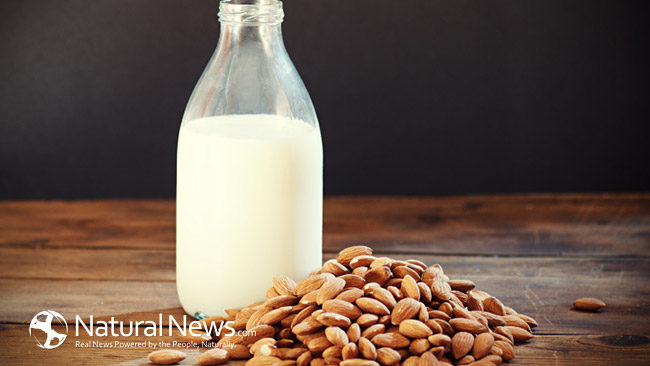Have you ever wondered how almond milk is made? It’s actually pretty easy and it’s the best way to avoid unwanted sweeteners and additives that are often used in commercial almond milk! The basic method of almond milk production is to grind almonds in a blender with filtered water, then strain out the almond pulp with a nut milk bag. Learn how to make it yourself!
Homemade vs commercial almond milk
Almond milk can be a good alternative to soy or cow’s milk. Unfortunately, though, not everything is healthy in commercial almond milk. Many brands add sugar and food additives such as carrageenan.
The FDA considers carrageenan safe, but research also indicates that carrageenan may cause gastrointestinal inflammation.
Making your own almond milk is the best way to avoid the unwanted sweeteners and additives.
Is homemade almond milk less expensive?
Homemade almond milk can be cheaper than store bought, or it can be more expensive; it really depends on the ingredients that are used.
Did you know that most of the almonds sold in the U.S. have been fumigated with propylene oxide, a chemical that may cause cancer?
For many reasons, it’s best to choose organic almonds even if they are much more expensive.
Is homemade almond milk nutritious?
Even homemade almond milk only contains small amounts of nutrients – unless the almond meal is kept. The almond meal is the part that contains the nutrients and fiber.
For example, almonds are packed with protein, but a cup of almond milk only contains 1g of protein. Regarding vitamins and minerals, unfortified almond milk is not rich in these nutrients either.
This is why commercial brands are often enriched with vitamins E, A and D, and calcium.
How is almond milk made?
The method is to grind almonds, add filtered water, then strain out the almond pulp with a nut milk bag. Here is a simple recipe to make homemade almond milk:
Ingredients
- 1 cup raw almonds
- 4 cups filtered water
Instructions
- To soak the almonds, place them in a glass bowl or large jar, and cover with filtered water.
- Soak for 12–24 hours in the refrigerator. Drain the water off. Some people also rinse the nuts several times to remove any of the anti-nutrients and enzyme inhibitors.
- Using a blender? Combine soaked almonds and 4 cups of filtered water. Blitz for about 60 seconds or until the nuts are completely broken down.
- You can drink it without straining it to keep more nutrients and fiber. If you want to strain it, you will need a strain cloth – like cheesecloth or a nut milk bag. Don’t waste the almond meal! You can strain it and dehydrate it. There are lots of great recipes using almond meal for cookies and smoothies.
- Place the nut bag over the opening of a glass bowl, jar or jug. Strain the nut milk through several layers. Squeeze out the excess moisture from the ground-up almonds.
- Keep in a tightly covered container. It stays fresh for about three days.
This recipe doesn’t contain sweeteners to make it healthier. But if desired, you can stir in 1 teaspoon of vanilla extract. People sometimes add a few pitted dates or a few tablespoons of pure maple syrup as an alternative to vanilla extract.
Sources include:
HealthyBlenderRecipes.com
OptiDerma.com
NaturalNews.com





